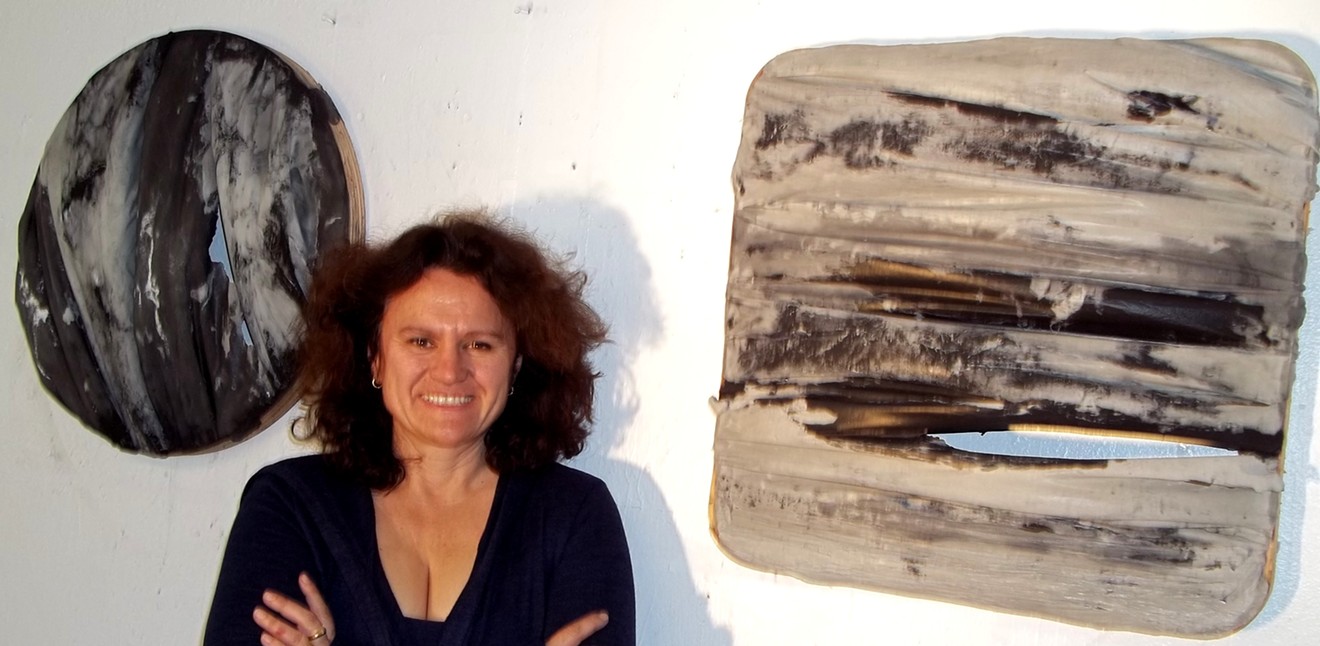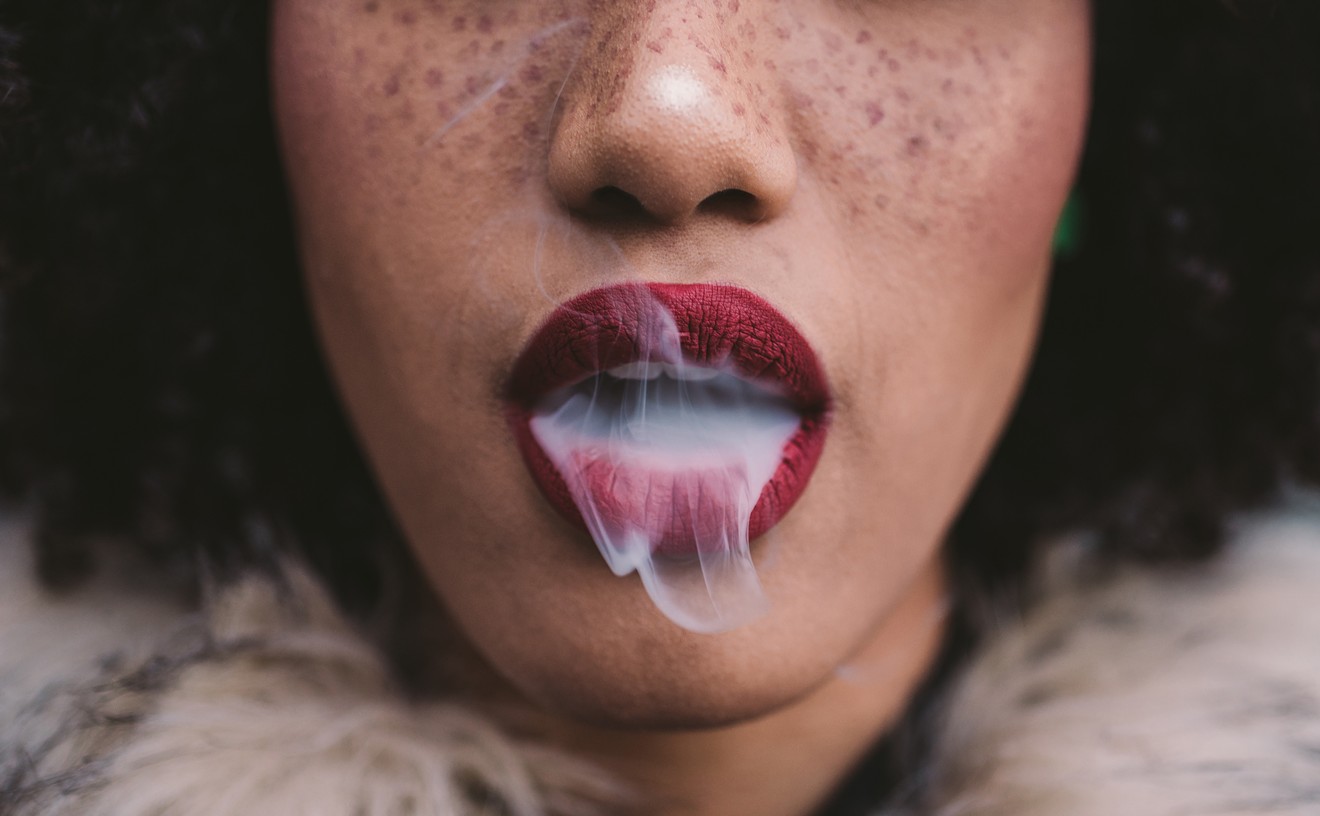Jardine began studying drawing, painting and sculpting when she moved to Texas 13 years ago with her husband, a physicist, and their twins. When she’s not teaching drawing at the University of North Texas, she’s in one of her Dallas studios tracing found objects, trash, twigs and soil.
She transforms raw urban material into soft, elegant landscapes. People who are into landscapes may first think of the colorful and detailed impressionism of artists such as Manet or Monet. But Jardine is not attracted to those images so much as she is artworks that deal in gray, black, whitish and earth shades reminiscent of the fumes and grayscale scenes of her childhood.
When she’s finished with one drawing, Jardine has a habit of hanging it on the wall of her studio and using it as inspiration as she moves onto the next.
Her latest project involves gathering plastic bags from local creeks, mounting them on a hollow wooden frame and then covering them with another grey substance: concrete. The round sculptures are then coated in charcoal, and the result elevates recycled and discarded material, perhaps never seen as beautiful, to art.

One series by Jardine is made from plastic bags that have been covered in concrete and charcoal.
courtesy the artist
Part of Jardine’s motive for using everyday materials is that she wants to prove that art does not have to be expensive or elitist.
“My mission is to make art accessible so it can come out to being equal for everyone, and to put it in places where it might not be included as art. Art is what makes us fundamentally human,” she says.
Jardine is working to make art accessible in other ways, too. This August she’ll become an author when Ilex Press publishes Make Great Art on an iPad, a drawing course book that teaches iPad users how to implement traditional drawing and painting techniques using technology.











